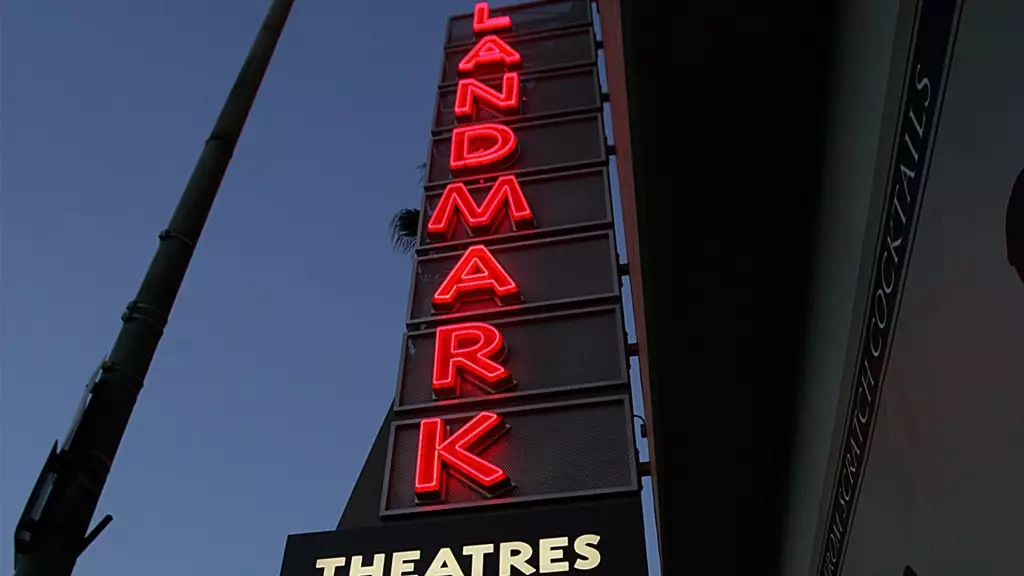Landmark Theatres, a chain once revered for its commitment to showcasing independent films, is repositioning itself in a cinematic landscape forever altered by the pandemic. A series of ambitious renovations is slated for its key locations: Bethesda Row, Lagoon, and Kendall Square. Each of these venues holds a unique place in their respective communities, and the planned transformative remodeling is not merely aesthetic; it symbolizes a robust resurgence and a strategic response to the increasing competition from both traditional cinemas and modern streaming services. The elevation of Kevin Holloway from president to chief executive, a move highlighting the company’s commitment to rejuvenation and innovation, sets the stage for this ambitious endeavor.
From Decline to Renaissance: The Path Ahead
In the wake of COVID-19, Landmark faced significant challenges that forced a reevaluation of its operations. The chain, which once thrived as a bastion of independent cinema, saw a considerable decline during the pandemic, resulting in the closure of 32 locations. Facing financial hardships, it pivoted towards mainstream studio fare to lure back audiences—albeit not the ideal strategy for its core identity. However, under Holloway’s leadership, the chain appears to be taking decisive steps towards revitalization. This is the moment for Landmark to reconnect with its roots while appealing to a new generation of film enthusiasts, particularly younger audiences who are critical in shaping the future of cinema attendance.
Innovative Designs: A Blend of Modernity and Tradition
The renovations at Landmark’s notable locations are almost like a love letter to cinema’s rich heritage while embracing modern innovations that enhance the viewing experience. Bethesda Row’s plans for an LED marquee and historically inspired lobby design reflect an homage to the past, ensuring that every inch of the theater pays tribute to its storied history. Meanwhile, the promise of luxury recliner seating and expanded bar offerings speaks to the contemporary audience’s demand for luxurious amenities. It’s this duality of experience that sets Landmark apart and gives it the potential edge it needs to reclaim its status in the competitive market.
In Minneapolis, the Lagoon’s transformation—including hand-painted murals and a complete overhaul of its bar and lobby—highlights the theater’s intent to create an inviting and immersive atmosphere. This move will not only serve to retain existing customers but could also attract new patrons looking for a more compelling cinema experience. Similar aspirations are echoed in Kendall Square, where a large format auditorium and upgraded technology are poised to transform the venue into a hub for screenings and live events, ensuring that it remains relevant in an era of virtual and on-demand viewing options.
Financing the Future: A Community Affair
While the details surrounding the financing of these renovations remain somewhat unclear, it has been suggested that partnerships with landlords will alleviate some of the financial burden. This collaborative approach embodies a communal spirit, further intertwining Landmark’s identity with that of the neighborhoods it serves. As Holloway notes, the aim is not only to elevate the theaters but to solidify their standing as cultural pillars in their respective communities. This perspective is refreshing and indicates a corporate philosophy that values community engagement over mere profit.
A Rocky Road Ahead: Bankruptcy Drama Lingers
However, the backdrop of Landmark’s revitalization is fraught with complications, such as ongoing legal battles resulting from financial woes tied to its owner Charles Cohen. After defaulting on a substantial $534 million loan, Cohen’s entanglements with creditor Fortress Litigation Trust continue to cast a shadow over the company’s future. The court’s decisions regarding his personal financial obligations and the implications for the Landmark brand itself might pose further challenges.
Cohen’s leadership is both a blessing and a burden; while his vision for cinema is clear, the litigation and financial uncertainties could potentially hinder Landmark’s resurgence. Nevertheless, Holloway’s appointment and his extensive experience in the industry could be the right combination needed to steer Landmark back into prosperous waters.
In an era where the definition of cinematic beauty and experience is in a state of flux, Landmark Theatres stands at a pivotal crossroads. With innovative renovations and a renewed vision, the chain is poised to reclaim its status as a cherished fixture in the cinematic landscape, all while navigating the rocky terrain of financial recovery and evolving audience expectations.

